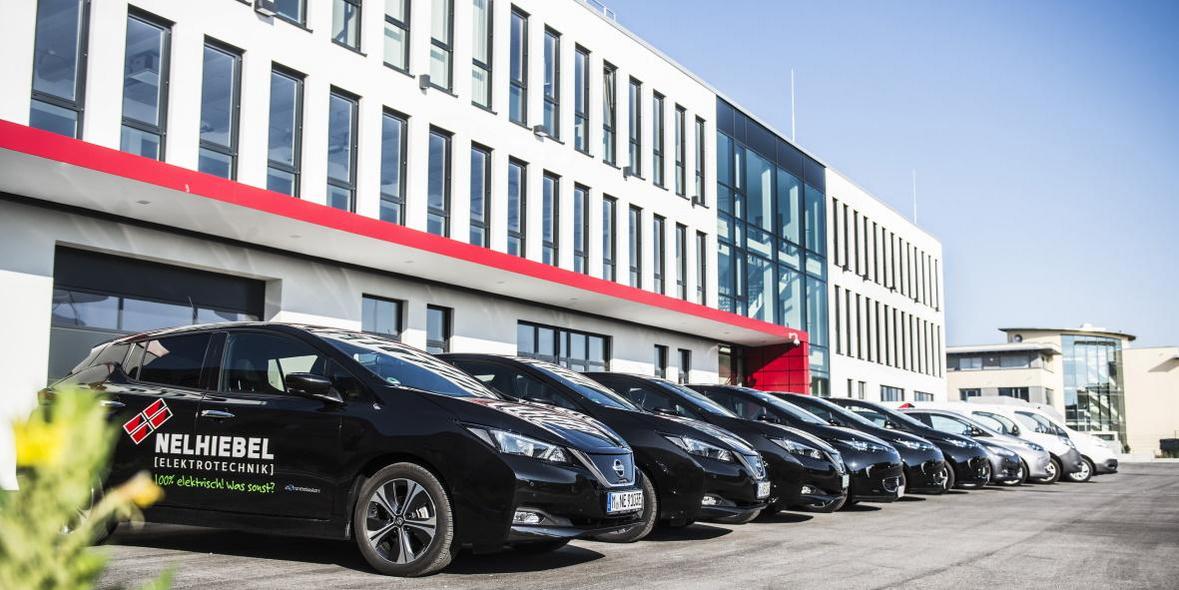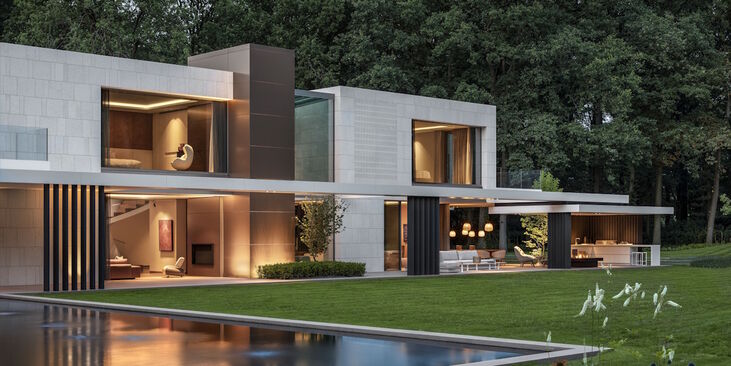16. Jun 2020
Energy-efficient Office in Munich

Nelhiebel Elektrotechnik GmbH plans and implements projects in the fields of building technology and building automation, industrial automation and event technology. In 2019 it built an office for the production of electrical cabinets, with a floor area of 2800m2 in the west of Munich. Due to its excellent energy efficiency, the building was certified according to the KfW-40 standard.
Project brief
The entire building was to be equipped with the most modern technologies and the highest quality components across all building trades. The aim was the operation and display of the entire building technology via the central building management system (BMS) controlled using KNX. The BMS was to have visual user interfaces in different variants, including free visualisation, tile and button displays.
The KNX system was also to provide control and display of all trades, and interfaces to BACnet, DALI, Modbus, Zigbee and multimedia. Other system requirements included groups and authorisation structures; decentralised touch sensors and touch panels; error messages and notifications; status displays and logging; specially-written scripts for complex functions and logical links in the 'Lua' programming language; representation of trends such as weather data, energy, air quality, switching states etc; scene control; freely-configurable timers; room temperature control; and energy monitoring.
The main challenge was to generate interfaces to the various HVAC controls. The protocols and interfaces could only be established through precise project planning and coordination.
Solution
Our solution to unite all trades in a BMS and to be able to visualise them as well as to provide an intelligent interplay of modern building technologies with the use of KNX components. Through interfaces to protocols such as BACnet, DALI, Modbus, ZigBee etc., all trades were integrated into the KNX bus technology. This made holistic facility management of the building possible via a KNX server. Fault messages from heating and ventilation and air conditioning systems, wastewater lifting systems, fire alarm systems, lighting control systems, fire dampers and status displays of magnetic, bolt and door contacts are visually displayed, logged and, depending on the prioritisation, transmitted to the house technician.
With KNX, the complex building technologies and thus the system-linked building controls could be brought together. This was the main advantage and made it possible to visualise and operate the entire installation using KNX, which is easy to understand and user-friendly.
KNX made it possible to visualise and operate the entire installation in an easy-to-understand and user-friendly way.
Installation
The KNX lines were installed using the KNX-TP structured building cabling. The backbone was implemented in KNX-IP. Connections to all control units were established via an IT network. All KNX components were created in the ETS project prior to installation, physically addressed and programmed with the application program. The planning, programming and commissioning of the entire project took around 1500 hours.
It took a while for the HVAC systems to run smoothly, however, all faults were visible via the KNX visualisation. The facility manager was automatically notified and was able to react immediately.
The mobile partition walls, which can be moved to a variety of positions throughout the meeting and lounge area in order to realise different room sizes, were a particular challenge. Complex programming and logical links ensured that the control elements and the visualisation adapt to the current room situation. Among other things, KNX-RF technology was used for the implementation.
Benefits of using KNX
The latest addition to our reception area is a showroom in which, thanks to KNX, we can present the perfect interplay of the four pillars of a smart home, namely security, comfort, entertainment and energy.
Through the use of KNX, complex building technologies could be combined into one central control, which enables all trades to be displayed and operated. With our solution, the user has a holistic facility management based on an easily-understandable and user-friendly visualisation interface. KNX technology has also made it possible to bridge difficult installation paths via RF connections.
KNX technology has also made it possible to bridge difficult installation paths via RF connections.
Thanks to the standardised technology KNX also allow updates and problem-free exchange or renewal of devices, so the installation can always remain the state-of-the-art.
Key products and technologies used
KNX-TPKNX-IPKNX-RFDALIBACnetModbus RTUModbus TCPZigbeeKNX-Server - Merten/Schneider Electric Type SpaceLYnk LSS100200Schneider Electric c/o MertenSchneider Electric IndustriesZennio Gira Albrecht JungBerkerCIATBusch - Jaeger BAB TechnologieTheben AGBrück Electronic GmbH (B.E.G.)
Project: JB7
Een project van: Nelhiebel Elektrotechnik GmbH
Contact: Felix Schneider
Highlights
-
 News
NewsThe KNX Journal 2025 is now available
The latest edition of our annual smart home and building solutions magazine has arrived. The KNX Journal 2025 offers ... -
 News
NewsNew ETS App: Password Manager
The ETS Password Manager is a powerful new ETS App introduced in ETS 6.3 that eliminates the need to repeatedly enter ...


